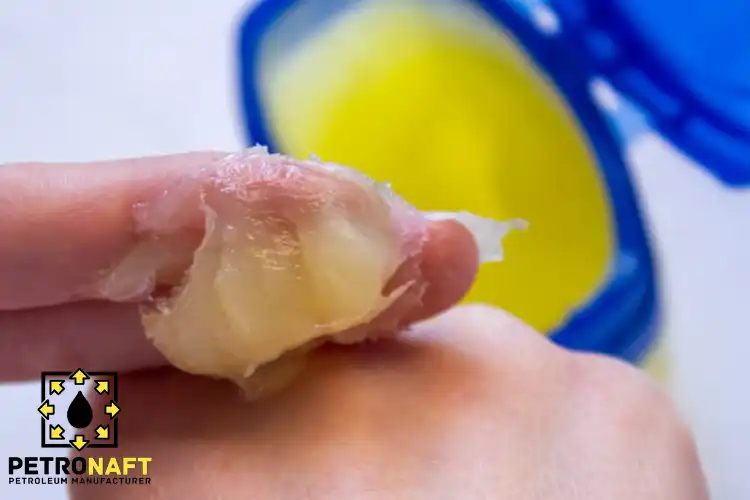Content Overview
Demystifying Vaseline: Expiration and Storage Tips
“Does Vaseline Expire?” is a question that frequently arises when rummaging through old skincare products. Delve into the science behind Vaseline’s shelf life, understand its composition, and learn how to determine if your petroleum jelly is still safe and effective to use.
The Composition of Vaseline
Before delving into the expiry of Vaseline, it’s essential to understand its composition. Vaseline is a brand name for a mixture of mineral oils and waxes, with the primary ingredient being petroleum jelly. Petroleum jelly is a semi-solid mixture of hydrocarbons, which are byproducts of petroleum refining. This unique combination of ingredients gives Vaseline its occlusive properties, enabling it to form a protective barrier on the skin, locking in moisture, and promoting healing.
Does Vaseline Have an Expiration Date?
While Vaseline doesn’t have a specific expiration date, it typically comes with a “best before” or “best by” date on its packaging. This date is an indication of when the product may begin to lose its efficacy or quality. Generally, Vaseline’s shelf life is about three years when stored under proper conditions. It is important to note that the shelf life of Vaseline may vary depending on factors such as storage conditions, exposure to contaminants, and the manufacturing process.
Factors Affecting Vaseline’s Quality
Several factors can influence the quality and shelf life of Vaseline. These include:
a) Temperature: Exposing Vaseline to extreme temperatures can cause it to break down or become less effective. It is best to store it at room temperature, away from direct sunlight or heat sources.
b) Contamination: Introducing contaminants like dirt or bacteria into Vaseline can affect its quality. Always use clean hands or a clean tool when applying Vaseline to avoid contamination.
c) Container: The type of container that Vaseline is stored in can also affect its quality. It is best to keep Vaseline in its original container, which is usually designed to protect it from light, air, and moisture.
d) Manufacturing Process: The quality of Vaseline can vary depending on the manufacturing process and the purity of the petroleum jelly used. Always choose a reputable brand to ensure you are getting a high-quality product.
How to Properly Store Vaseline
To prolong the shelf life of Vaseline and maintain its effectiveness, follow these storage guidelines:
a) Keep Vaseline in its original container, ensuring that the lid is tightly closed after each use.
b) Store Vaseline at room temperature, away from direct sunlight, heat sources, and extreme temperatures.
c) Avoid contaminating Vaseline by using clean hands or a clean applicator when applying it.
d) Check the “best by” date on the packaging to ensure that the product is still within its recommended shelf life.
Signs That Vaseline Has Expired or Lost Its Effectiveness
While Vaseline does not have a specific expiration date, it may lose its effectiveness over time. Some signs that Vaseline may have expired or become less effective include:
a) Change in texture: If Vaseline becomes hard, lumpy, or difficult to spread, it may have lost its effectiveness.
b) Change in color or odor: If Vaseline develops an off-color or an unusual odor, it could be a sign that the product has degraded or become contaminated.
c) Irritation or discomfort: If applying Vaseline causes skin irritation or discomfort, it may be best to discontinue its use and consider replacing the product.
Is It Safe to Use Expired Vaseline?
While using Vaseline past its “best by” date may not be harmful, it may be less effective in providing the intended benefits. If you notice any changes in the texture, color, or odor of the Vaseline, or if it causes any skin irritation, it is best to discard the product and purchase a new one. Always prioritize your skin’s health and safety by using high-quality products within their recommended shelf life.
Alternatives to Vaseline
If you find that your Vaseline has expired or become less effective, there are several alternatives to consider. These include:
a) Natural oils and butters: Products like coconut oil, shea butter, and cocoa butter can provide similar moisturizing and healing benefits as Vaseline. Be sure to select a product that suits your skin type and needs.
b) Glycerin-based products: Glycerin is a humectant that can help draw moisture to the skin, making it an effective alternative for dry skin relief.
c) Lanolin: Lanolin, a natural wax derived from sheep’s wool, can provide similar occlusive properties as Vaseline, helping to lock in moisture and promote healing.
d) Other petroleum jelly products: If you still prefer using petroleum jelly, consider purchasing a new, unexpired product from a reputable brand to ensure its effectiveness.
Conclusion: Understanding the Shelf Life of Vaseline
In conclusion, while Vaseline does not have a specific expiration date, its shelf life is typically around three years. Proper storage and handling can help maintain its effectiveness, but if you notice any changes in texture, color, or odor, it may be best to replace the product. Always prioritize your skin’s health and safety by using high-quality products within their recommended shelf life. If you find that your Vaseline has expired or become less effective, there are several alternative products available to provide similar benefits for your skin.
Purchasing This Product from Petro Naft
For more detailed information and to purchase the product discussed in this article, please visit the dedicated product page below. Alternatively, use the various communication channels provided on our site to register your purchase inquiry or take advantage of our expert guidance.
Prepared by the PetroNaft Co. research team.

